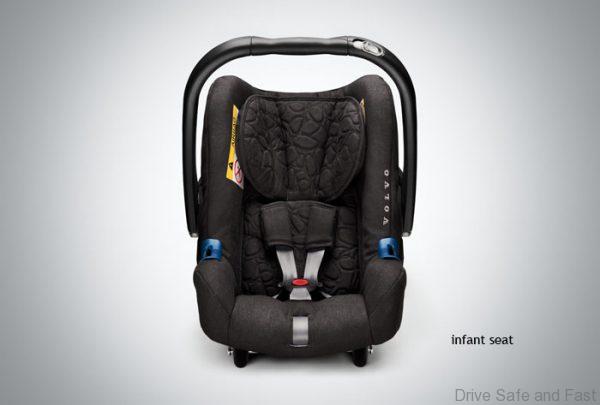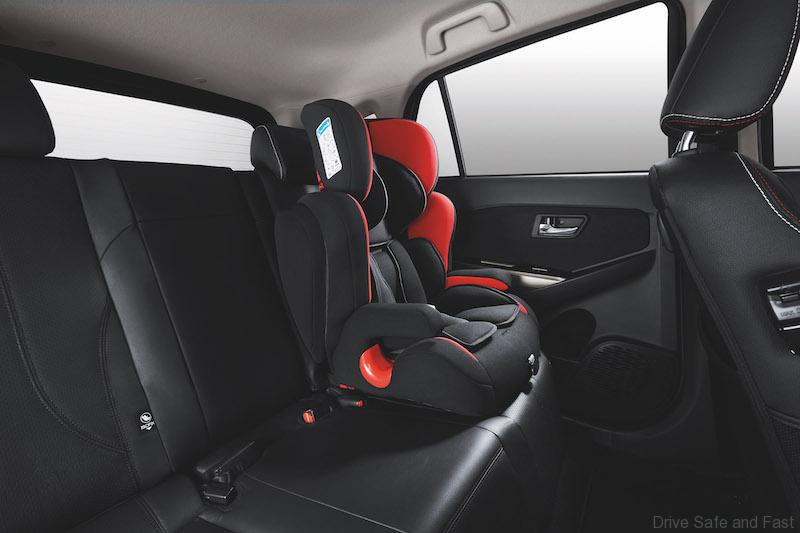Let me begin this article by saying that I have the utmost respect for YB Anthony Loke. I feel he is one of the few ministers in power today who has made practical, effective decisions that have led to real improvements in the system. However, this article concerns issueS relating to mandatory child restraint seats (CR seats) and statements issued by Deputy Transport Minister Kamarudin Jaffar.
The Deputy Minister said that they would exempt large families from installing CR seats.
What is your personal response to the government possibly exempting large families from using child car seats?

Personally, I think this is a rather silly move by the transport ministry. But let’s play Devil’s Advocate for a second. What are good reasons to support the exemption to a rather reasonable rule:
- Larger families may not have or be able to afford vehicles with enough CR seat mounting points
- Larger families may not be able to afford enough CR seats
- Many voters may not be happy with being forced to spend money on this new measure by the Pakatan government

Essentially it boils down to those reasons. And those are all important factors to consider. However I find it unreasonable to create such an exception. Here are some reasons I can think of right now:
- The implication is that the lives of children matter less in larger, poorer families
- The implication is that two sets of rules exists for two classes of people and road users.
- The implication is that if one simply buys a car with fewer CR seat anchor points than your family requires, it will also cost you less because you won’t have to buy the required number of CR seats for your family
- The government decides when a family crosses the threshold between small and large (and the Transport Ministry is presumably going to make this decision based on who knows what rationale)
CR Seats and safety belts do not guarantee safety, but they do indeed reduce the risk of serious injury and death. We may, as lay people, feel as if there is injustice in forcing the poor to spend money on using vehicles as they are intended to be used. But all we’re doing is passing the true cost along some other way. Either the hospitals, the insurers, other road users or the families themselves are eventually forced to pay for this or they get away with it and the ‘tidak apa’ attitude gets reaffirmed and passed along to the next impressionable person.
Again, as a layperson, I can see why there’s a practical reason for supporting this exception. But as a minister, M.P. and leader I am not satisfied with Mr. Kamaruding Jaafar’s statements. Find a solution, stick to it with the conviction of a person who has been given the mandate to create and enforce laws. This kind of exception creates the impression that the laws only matter when the police are around to enforce them. No. They’re there do create good habits and conscientious road users. Take them seriously, no exceptions. If there are economic implications, it is not for the Transport Ministry to worry about. Let the economics Minister create mobility solutions that work.
Here’s more information from Child Passenger Safety Malaysia.
Press Release
In a press conference yesterday held by the Federation of Malaysian Consumers Associations (FOMCA) and Child Passenger Safety Malaysia (CPSM), several issues were raised on the recently launched child restraint system (CRS) guidelines by the Malaysian Institute of Road Safety Research (MIROS).
The guideline which is said to be confusing to the consumers indicated that a MIROS QR Code will be present in approved seats sold in Malaysia. Upon clarification by FOMCA with the Road Transport Department (JPJ), it was found that a component type approval (CTA) by JPJ is enough to show thata safety seat is approved as per safety standard. This leads to the question of the necessity of the QR code.
There are currently no known safety seats sold in Malaysia that comes with the QR code and this caused parents to hesitate on buying safety seats for their children. It is a counter-intuitive measure to introduce the QR code now when Malaysia is still at its early stage of introducing this new law and promoting the use of child safety seats.
Nur Asyikin Aminuddin, a Senior Manager from FOMCA deemed the guideline as misleading as it does not portray the views from stakeholders including independent bodies as well as the consumers. “MIROS as a research body is not a certifying body. I hope that Standards Malaysia should intervene with this issue as they are the national accreditation body”. She added that JPJ and Ministry of Transport (MOT) should be the responsible bodies to endorse and make any guidelines and official announcement related to child safety seat. They should also publish the list of approved brands and models on their website that succeeded in getting the JPJ’s CTA and thus met with the required safety standards.
Another issue addressed by FOMCA yesterday was MIROS collaboration for the LAZADA Car Seat Assurance Program. The collaboration is violating the Competition Act 2010 as it breached the rights of consumers, which is the right to choose. The program is restricting the market when it should be an open market. Crash-worthy child safety seats should be made available not only through one online platform.
The press conference was made after the graduation ceremony of 19 new certified Child Passenger Safety Technicians (CPST) present during the ceremony yesterday. This number adds up to a total of 66 certified CPSTs in Malaysia, with the majority of them from retailers and distributors. The certification program which started in 2018 is an annual training program with Safekids Worldwide as the certification body and CPSM as the co-organiser. The aim for the program is to increase the numbers of skilled and knowledgeable person that will become the resource center in their communities to relay updated and correct information with regards to selection and usage of child restraint system.
Malaysia is in dire need to increase these personnel certified by a proper certifying body to cater for the growing awareness among the public. With that being laid out, competency of the agency in conducting any certification such as the Child Occupancy Safety Advisor (COSA) program was also being asked as the proper channel should be directed at utilising readily available resources such as Safekids Malaysia which is also in partnership with Universiti Putra Malaysia (UPM).
CPSM in agreement with FOMCA’s concerns are both supporting of the new law. However, MOT was urged to provide clear direction and roles for its agencies in order to execute the law efficiently.

